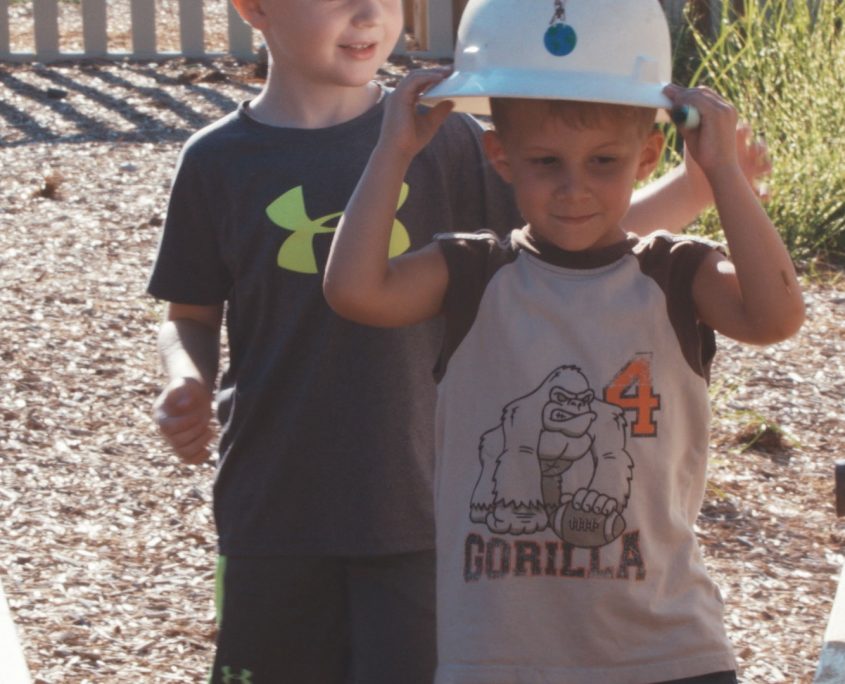
 Children’s play is designed to find purpose from the world around them through opportunities for building and constructing, relationships and movement. Children build and construct knowledge through open-ended experiences and the use of natural materials. They use blocks to test the limits of gravity. Children work on constructing their own meaning of the world around them and find their place within it. When taking another child’s food order in the dramatic play, children are making sense of what they have seen in real life and making the connection of how it relates to them.
Children’s play is designed to find purpose from the world around them through opportunities for building and constructing, relationships and movement. Children build and construct knowledge through open-ended experiences and the use of natural materials. They use blocks to test the limits of gravity. Children work on constructing their own meaning of the world around them and find their place within it. When taking another child’s food order in the dramatic play, children are making sense of what they have seen in real life and making the connection of how it relates to them.
“My son’s confidence and ability to bond with others has grown.”
Families
When preschoolers are given the opportunity to cook, pour their own milk, clean up their own spills, put their own dishes away and sort silverware, they begin to take ownership of their behavior and are empowered to solve problems. This helps make stronger connections between home and school.
Caregivers
Caregivers observe preschoolers interacting with the space around them, the materials, and other children to gain a deeper understanding about the children’s individual developmental needs. Caregivers use these observations to plan for the environment and experiences to support unique needs with special consideration for constructing, relationships and movement. Teachers use what the children say or ask, to help build and construct children’s understanding of their own personal investigations.
Caregivers and children will build and construct their knowledge together by investigating natural materials that are discovered, found or brought in. By asking, answering and seeking out information to questions that come to fruition through exploration, caregivers support the child’s natural curiosity.
